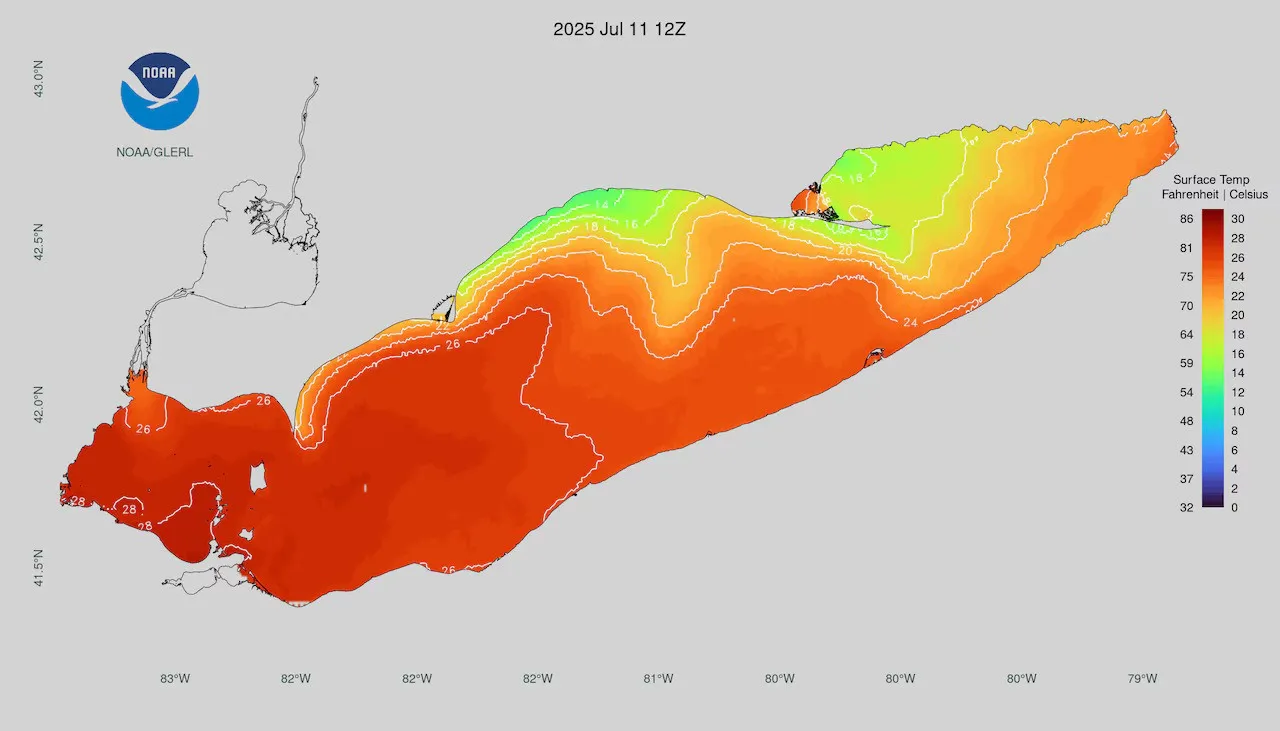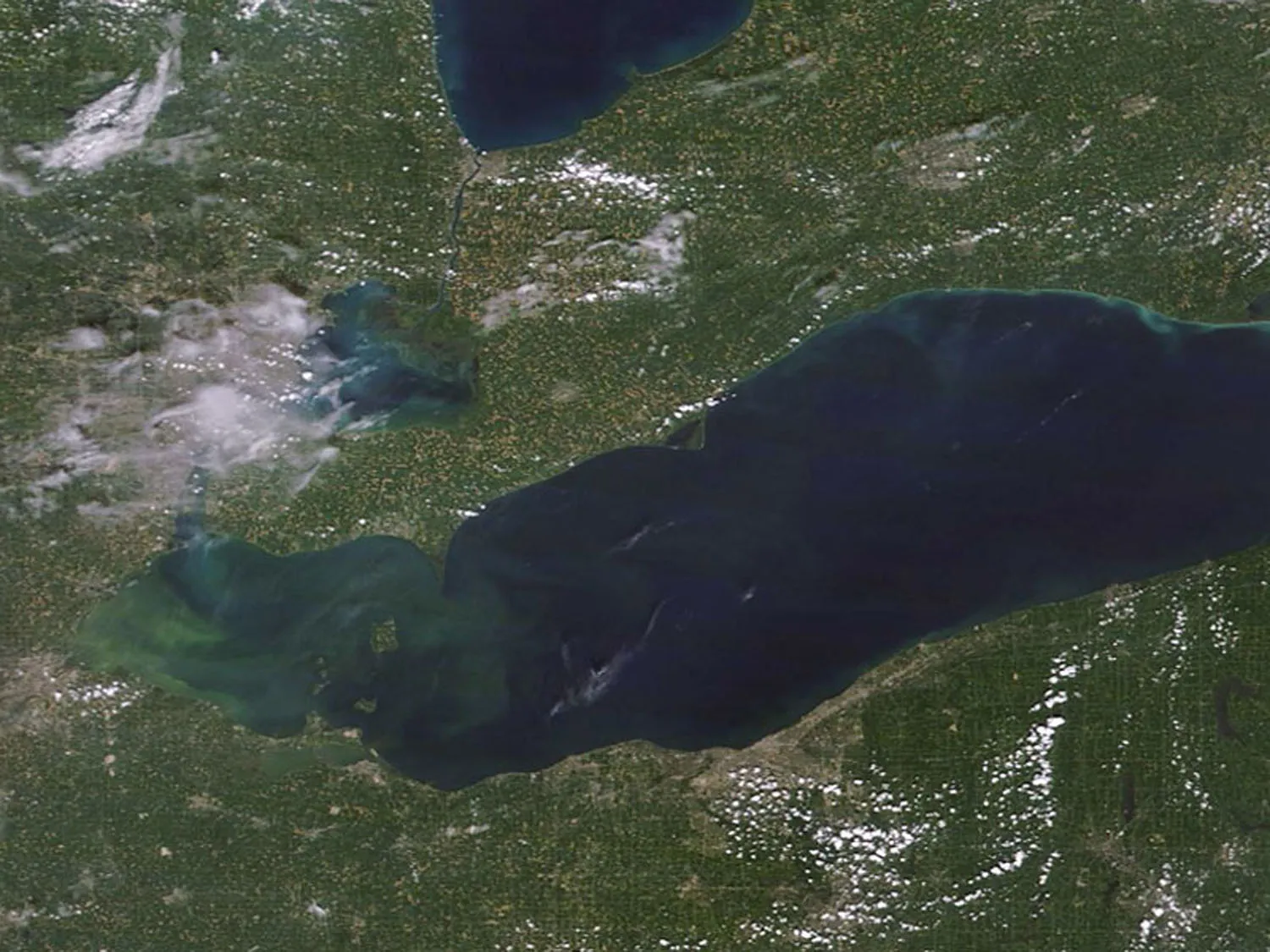In the heart of the Great Lakes region, Lake Erie, the shallowest and perhaps most vulnerable of the five lakes, exhibits a striking change: from one of the coldest June temperatures to one of the hottest July temperatures. Within a few weeks, surface water temperatures rose four degrees above the mid-July average, reaching 24 °C — a level typically observed only at the end of the month. For scientists, local residents, and those dependent on this enormous water resource, the question arises: is this rapid warming a harbinger of an ecological crisis or merely another manifestation of the lake's changing nature?
Sudden Warming: An Anomaly or Normal?
This summer, Lake Erie became the scene of meteorological drama. In mid-June, its waters were the fifth coldest on record, but by early July, the temperature soared to the fourth warmest. According to James Kessler, a researcher physicist at the Great Lakes Environmental Research Laboratory (GLERL) of the National Oceanic and Atmospheric Administration (NOAA), this increase is not unprecedented but is noteworthy.
"Yes, it seems faster than usual, but we've seen similar occurrences before," Kessler explains in an interview with The New York Times. He attributes the sharp jump to a prolonged period of sunny weather and abnormally high air temperatures, including a heatwave at the end of June when thermometers in northeastern Ohio reached 35 °C.
Currently, surface temperature levels in the lake have stabilized slightly below 24 °C, which is four degrees higher than the average over the past 30 years. Kessler suggests that the lake is approaching its summer peak, when water and air temperatures usually level out, typically from mid-July to mid-August. "We're close to the peak, but it's not the only high point," he adds. "Temperatures may fluctuate due to daily weather changes, but significant further warming isn't expected."

Will 2025 Break the 2020 Record?
If we look at historical data, 2020 remains the benchmark for extreme warming of Lake Erie. On July 10th of that year, surface temperatures reached a record 26.3 °C — the highest in modern observations. Could 2025 approach this threshold? Kessler is cautious in his forecasts. "Air temperature in the coming weeks will be a decisive factor," he says. "It's still difficult to say how this year will go down in history."
Compared to other Great Lakes, Lake Erie stands out for its sensitivity. On Thursday, surface water temperatures were 19.8 °C in Lake Michigan, 21.5 °C in Lake Ontario, and 18.2 °C in Lake Huron. Lake Superior, the deepest and coldest, remained cool at 8.6 °C, which is average or even below average. "Erie reacts more quickly because of its shallowness," explains Kessler. "Its average depth is only 19 meters, making it vulnerable to short-term weather changes."
Environmental Concerns: Algal Blooms and Beyond
Although warm waters of Lake Erie may delight vacationers, they alarm ecologists. Temperatures above 25 °C create ideal conditions for harmful algal blooms, which typically intensify from July to October. This year, meteorologists predicted moderate blooms in the western part of the lake near Toledo, but Kessler notes that recent warming is unlikely to significantly alter this forecast. "The level of phosphorus and nitrogen in runoff plays a greater role than temperature," he emphasizes.
However, there is some good news. New data suggest a decrease in phosphorus levels in the lake, which could reduce the severity of algal blooms in the long term. "This is cautious optimism," says Kessler. "But we must continue monitoring runoff and other factors."
Looking Ahead
Lake Erie, with its volatile character and sensitivity to climate change, remains a mirror of broader environmental trends. Its rapid warming this summer is not just a local anomaly but a reminder of how climate shifts impact fragile ecosystems. While scientists like Kessler continue to track temperatures and water quality, residents of the Great Lakes region prepare for a summer that could be among the hottest in history.
Will 2025 become the new 2020? The answer depends on the weather in the coming weeks—and on how humanity manages the challenges facing our shared natural treasures.



